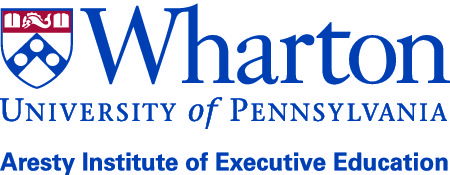- Governance
Mastering Catastrophic Risk
Howard Kunreuther and Michael Useem show how companies are coping with disruption and offer profound insights on mitigating and managing risk
Ten years ago, the potential for market failure was always there. Where things went wrong was the unfounded degree of confidence financial institutions, governments and companies had in their ability to manage the consequent risks. Today the debt that magnified those financial risks is still with us and business leaders need to beware of false confidence. They need to be armed with the knowledge and strategic capability to mitigate all types of potential risk and manage any of shocks and crises if/when they happen.
In their new book Howard Kunreuther and Michael Useem, both professors at The Wharton School and leading authorities on risk management, suggest that many companies today are more accurate in their assessment of major risks and use a range of examples – from Boeing and Blackrock to Lufthansa and Walmart – to highlight the smarter strategic thinking these companies apply to build corporate preparedness.
The silver lining in the rising tide of corporate disruptions is an increasing company readiness to face them
The AI revolution, Brexit, US-China trade disputes: Corporate risk factors are ever changing and the sheer pace of change is a challenge for time-pressed business leaders. It can be too easy to focus on short term concerns and ignore those small signs that can signal impending disaster or to put off until tomorrow a serious assessment of all risks and how they should be managed.
It is also easy to be fooled into thinking a near miss means “it will not happen to us” or to underappreciate how global connectedness can exacerbate risk, or to focus on last year’s disaster without realising the next one is unlikely to resemble the last. And too often protective measures can be seen as too costly and even as making the firm less competitive.
In their book, Mastering Catastrophic Risk, Kunreuter and Useem emphasise the need to avoid these reasons for inaction, and explain how a few savvy companies have established effective procedures that have helped them prevail through various forms of risk. Based on these cases, they show how companies have expanded their deliberative thinking and developed enterprise-wide risk management practices from the boardroom to the front-line to prepare for and build resilience to ensure recovery from crisis events.
……………………………………………………………………………………………………………………….
Dates: May 26 – June 28, 2019 │ Format: In-class study │ Location: Philadelphia, PA
……………………………………………………………………………………………………………………….
Two themes run through the book. First, the authors use a convincing DISRUPT model that highlights seven key Drivers of disruption: Interdependencies increase exposure; Short-term focus results in limited vision; Regulations require change and may constrain opportunities; Urbanization increases the cost of disasters; Transparency increases public awareness which impacts reputation and value. Secondly with a nod to behavioural economics and stressing the term ‘deliberative thinking’ they focus on the decision-making processes that lie behind risk analysis and management in companies.
“The silver lining in the rising tide of corporate disruptions is an increasing company readiness to face them,” say Kunreuter and Useem. Their book, by defining the steps all companies should take in this era of ever-increasing risk, can help build your company's readiness.
Mastering Catastrophic Risk: How Companies Are Coping with Disruption, Howard Kunreuther and Michael Useem. Published by Oxford University Press, 2018. ISBN 978-0-19-049940-2
At Wharton, we combine theory and practice with an industry perspective to deliver in-depth knowledge for immediate impact. More than 10,000 executives attend our programs annually.
ARTICLES YOU MIGHT LIKE
VIDEO
WEBINAR RECORDING: Prof. Walid Hejazi, Andrea Barrack, and Susan McGeachie explore and debunk some of the enduring myths surrounding ESG
DEVELOPING LEADERS QUARTERLY MAGAZINE AND WEEKLY BRIEFING EMAILS


































